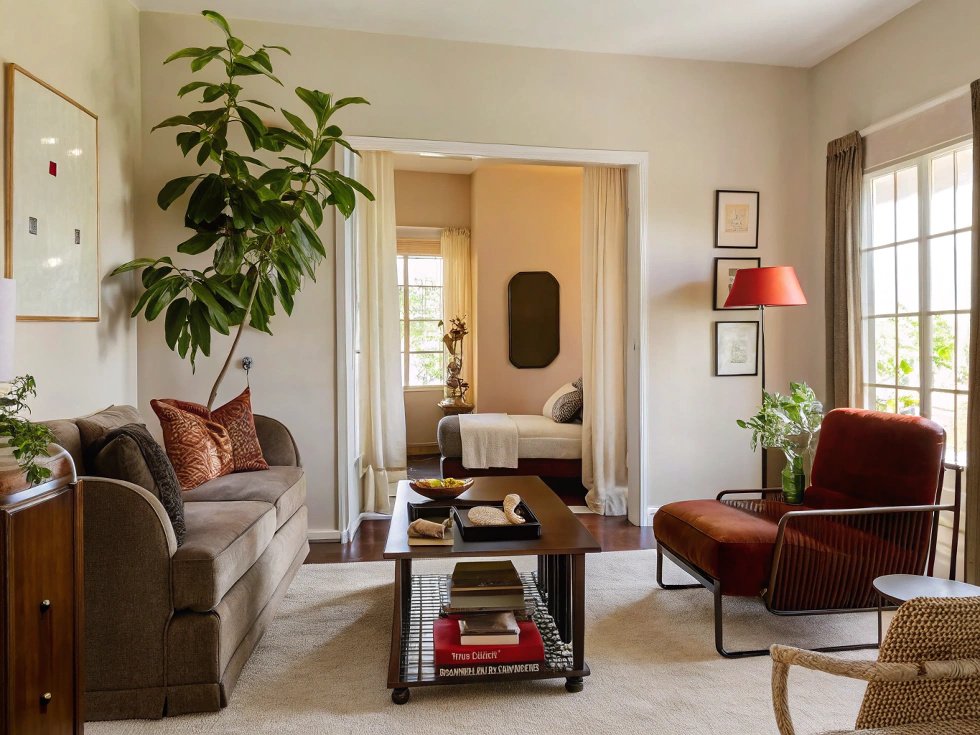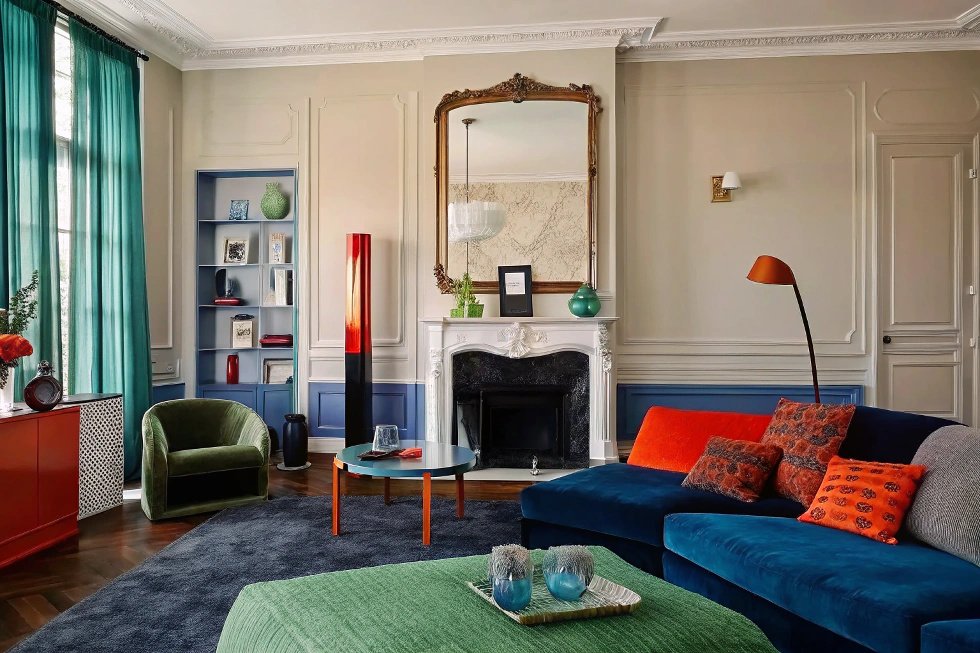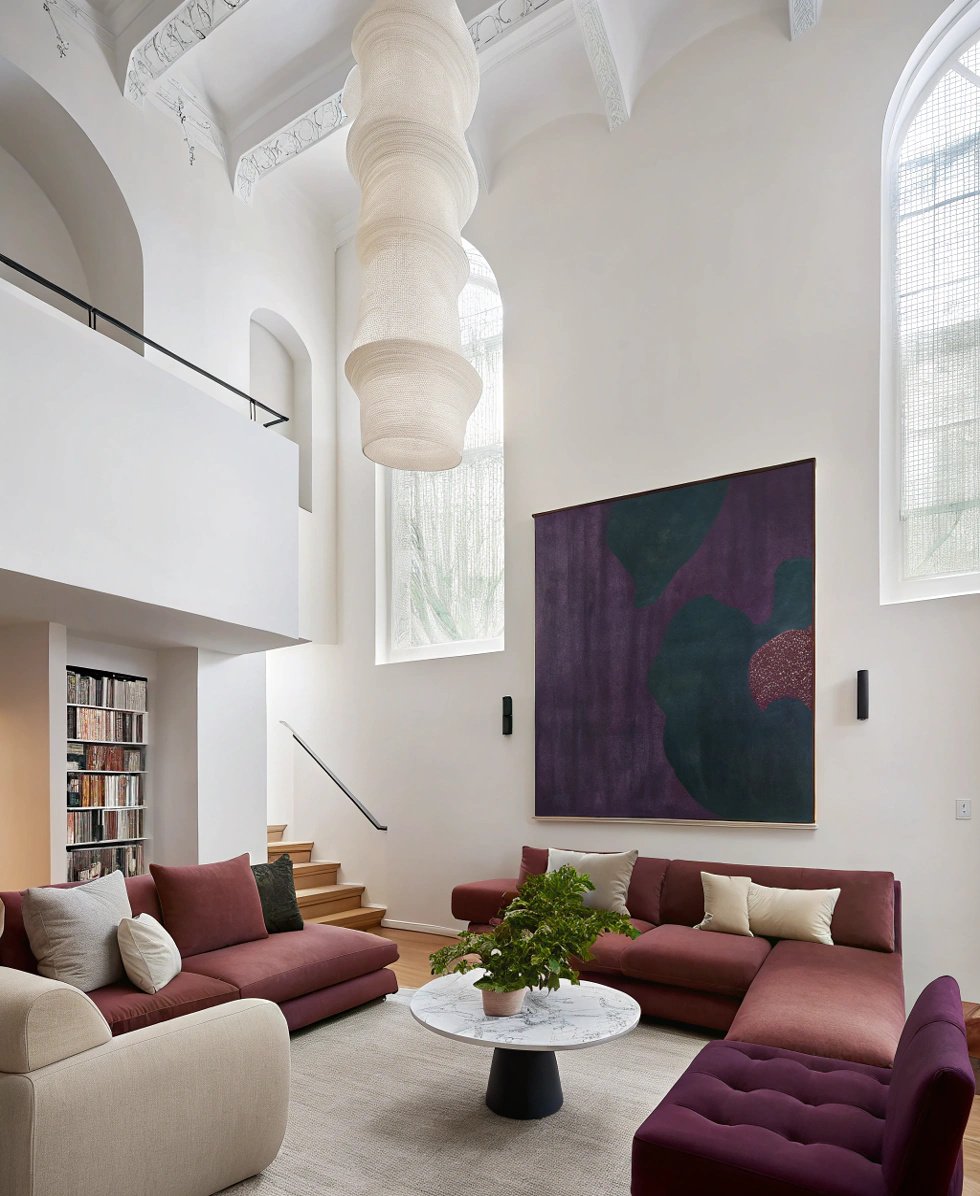Most people envision the same setup for the living room: a couch, a few chairs, two or three tables, and a coffee table in the middle. It appears to be easy at first but this is really not the case for the great interior designers. A badly imagined living room could have been an opportunity to build a much more exciting space that is creative and innovative. A-List designers say that there is evolution in the way living rooms are designed, people are moving away from the norm and are choosing designs that establish a deeper connection with the inhabitants.
For the year 2025, the living room is expected to become more personal, functional, and formal. The era of boring, gimmick-following, and trend based spaces is over. The future promises to fashion living rooms that seamlessly weave together comfort with artistry, structure with softness, and modernity with nostalgia. Designers are fundamentally changing the ways by which people choose to entertain guests or relax in the comfort of their homes, which now serve as spaces that showcase both the person’s individuality and the shifting designs around the globe. Expect to see natural textures complimenting jewel tones, artistic furniture silhouette sculptures, and ambient construction designed for both calmness and liveliness. Living rooms in 2025 will incorporate elements such as sculpted banquettes next to the fireplace, record rooms for a bit of peacefulness, or a formal setting for social dos. It will reflect layered, inviting, and individuality.
The Comeback of Classic Formal Living Rooms

One of the most notable changes to a living room in 2025 is the resurrection of the formal living room. The concept reminds us of the 1930’s living rooms which depicts an art of segregating spaces for socialising and promoting artistic activities. Jeremiah Brent, an A-List designer cites, « »While looking back to the 1930’s for some design inspiration, I can definitely see the re-emergence of formal living rooms. » These rooms will be designed for hosting guests and appreciating beauty in arts, rather than for advanced technology. Instead of setting the TV and sofa as the main focus, designers are picturing living rooms dominated with bar carts, two or more seating areas, fireplaces, and even art collections.
The designer Rita Konig has recognized a change in her work, especially when she designs smaller and more intimate living rooms from a larger layout. This is especially true for her living rooms. She has a particular preference for placing banquette sofas in areas that would not normally have them, like next to fireplaces or in front of bookshelves. Not only does this extra seating enable additional people to partake in gatherings, it also creates comfortable spaces for people to relax in solitude. “Every house needs a bar,” Konig states revealing the growing importance of spaces intended for home socializing. The intention is to achieve a balance between a personal touch and polished refinement, so that the rooms can be adaptable for different social settings.
Designers today are personalizing their designs with homeowner’s preferences ranging from materials to colors and even the layouts. As per Julien Sebban, founder of Uchronia, says that these design choices are more than just a trend. It is based on a more profound philosophy to which we choose to live in. “These colors and materials aren’t just fashionable,” he says. “Each element is crafted to the space and the people living in it.”
“Clients are also looking for more focused spaces,” explains Tiffany Howell, another A-List designer. “We are always customizing audio recording spaces. They are meant to be a getaway for audiophiles, so they are designed with a bar and lounge sitting area that can be used for casual or social purposes.”
Jewel Tones with Neutrals: The New Dynamic

The world of design has been facing an obsession in the clash of colors for the past year fuelled by trends such as Barbenheimer. In 2025, this design is changing by combining rich jewel tones with subtle and quiet neutrals.
According to the designer Brigette Romanek “We will see jewel tones – rich emeralds or deep amethysts are perfect examples – being used on silences to punctuate neutral spaces. This helps in bringing depth without overpowering.” Jewel tones are vibrant colors, while neutral color palettes include more subdued colors, in this case, bringing balance on the two makes the space feels intriguing. The focus here is balance. The jewel tones will add vibrance and a sense of interest, while the neutral colors will keep everything grounded and serene.
The combination of jewel tones with the natural texture of linen, wood and wool brings a sense of luxury that is layered and tactile organic. This approach has an air of sophisticated charm that is warm and welcoming. It’s all about balancing comfort and style, as Romanek puts it. Spaces should be inviting, but never too overwhelming.
Softness With an Edge: A New Design Language

As the world moves towards 2025, it is anticipated that living rooms will continue to embrace the organic design modernism. Where natural soft materials meets soft forms and is combined with the sharpness of modern design as predicted by Tiffany Howell. “It’s always been a mix of natural woods and mixed metals,” she says. This beaut modernized approach provides a blend of natural elements with industrial features that transforms them into more sophisticated layers that feels focused and grounded.
Romanek reiterates Howell’s prediction, remarking that Romanek predicts that mixing soft upholstery with harder materials such as glass or metal introduces a nuance to living room design. “It’s about finding the balance between soft and rigid, neutral and statement, in a manner that makes the space feel real and alive.” Through the combination of these opposing features, living rooms will be transformed into multidimensional spaces where every part has a function and contributes meaningfully to the visual story of the space.
Curves: The Enduring Trend
Curved furnishings have overly defined living rooms in the past few years and this is likely to remain in style in the year 2025. Designers like Sebban assert that round and soft shapes are here to stay, from curved sofas to tall coffee tables. These forms immediately foster comfort and set a relaxed and warm atmosphere particularly in spaces for entertainment and relaxation.
But, even one does something unusual like Kelly Wearstler, an A-List designer. Kelly goes beyond traditional furniture sets by crafting sculptural masterpieces that serve an emotional purpose. “I’m interested in furniture as sculpture—functional pieces that evoke changing perceptions of their use,” she says. SWith that in mind, Wearstler argues that Livingroom sets can be pieces of art, and this is exactly how living room designs will look in 2025 when the borders of art and function become even more blurred.
Conclusion: Fresh Take on Living Rooms Design.
The world of 2025 has a different bend when it comes to designing living rooms. The trend has now shifted from sterile interiors to putting importance on the design being personal and functional. There is a shift in focus on different aspects of comfort, craftsmanship, and even individuality. The purpose served by a formal living room is now more appealing to us, which is integrating beauty with joy for the eyes. Spaces are now designed to be experienced rather than just used. Jewel colors blended with nature’s texture will add depth and vibrancy, while soft and organic materials will be paired with structured edges to balance attractiveness with curiosity. Sculptural pieces break free from the traditional view of design while curved furniture continues to serve comfort.
By the year 2025, living rooms will no longer serve a primary function. They will transform into rich, multi-faceted places where individuals engage in self-expression, social gatherings, and meaningful remembrance. The secrets to this new design era stem from greater personal self-exidences, genuineness, and deeper emotional bonds to the spatial outlines we craft. As designers continue to redefine boundaries, periphery elements of design are revisited, and the outcome is enhanced living rooms that are more creative and pleasing. Restfully or celebratory, these are the spaces that will elevate the balance of comfort and style into the heart of the undead home in the years to come.

